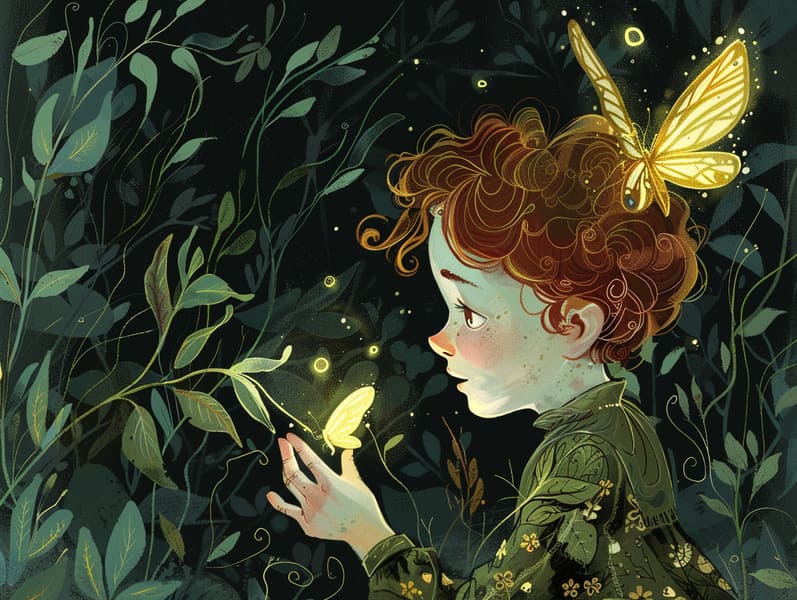Understanding the Enchantment of Sleepy-time Tales: Creating Prized Experiences with Your Little Ones
Understanding the Enchantment of Sleepy-time Tales: Creating Prized Experiences with Your Little Ones
Blog Article

Bedtime is a cherished time for families. It’s a moment to ease into rest, hug close, and delight in the wonder of stories.
For generations, stories for kids at bedtime have been a beloved custom, offering more than just a way to drift off. They provide an moment for closeness, development, and igniting vision.
The Meaning of Bedtime Stories
Evening stories for little ones are more than just a way to close the day. They play a vital role in a child’s growth and in enhancing the adult-child rapport. Here’s why they are important:
1. Together Time: Storytime before sleep fosters a special period of closeness between caregivers and children. It’s a moment of intimacy that helps children feel secure and secure.
2. Language Skills: Being read to helps children develop their linguistic abilities. They pick up new terms, understand grammar, and refine their hearing and understanding abilities.
3. Imaginative Skills: Children's tales take them to wondrous worlds, fostering creativity. They visualize characters, settings, and adventures, which ignites their innovation.
4. Emotional Skills: Nighttime tales often present characters facing challenges and emotions. These accounts help kids recognize and manage their own reactions, promoting emotional skills.
5. Cognitive Skills: Engaging with a story helps children develop attention span, memory, and analytical skills. They pick up to follow scripts, remember pieces, and predict outcomes.
How to Incorporate Bedtime Stories
Building a nightly ritual that involves reading aloud stories is manageable and gratifying. Here’s how to establish a treasured part of your night-time ritual:
1. Find a Cozy Place: Choose a snug place where you and your child can nestle in without distractions. A comfy bed or a cozy reading nook works ideally.
2. Pick the Right Time: Determine a set time each night for reading. Regularity helps children anticipate and makes the custom easier to maintain.
3. Choose Age-Fitting Stories: Select tales that are tailored to your child’s interest level. Younger children might prefer illustrated books with simple narratives, while elementary kids may be drawn to chapter books with more engaging plots.
4. Make the Story Interactive: Turn the tale become real by using different voices and tones, adding noises, and motivating your child to join in. Ask questions about the story to maintain their interest.
5. Set a Tranquil Atmosphere: Dim the lights, use whispers, and create a tranquil environment to help your child calm down.
How to Locate Bedtime Stories
There are many sources where you can find wonderful bedtime stories for children. Here are some ideas to think about:
1. Books for Children: Look at your nearby library or bookstore to find a broad selection of bedtime stories for kids. Exploring the books together can be a fun activity that also lets children to select stories that they like.
2. Internet Sources: There are many sites that offer free bedtime stories. Sites like children's story websites provide a variety of short stories for kids that you can access. bedtime stories for kids These platforms are great for finding new and unique stories without paying.
3. Apps for Storytelling: For nights when you’re too fatigued to read, think about audiobooks or storytelling apps. These can provide a gentle reading to read your child a story, ensuring they still get their bedtime story fix. Apps often offer fun elements that can hold their focus further.
4. Personal Stories: Compose your own stories tailored to your child’s hobbies. Personalized stories can be highly engaging and meaningful. You can get your child in the storytelling process, making them a part of the adventure.
Benefits of Short Stories
Short stories for kids are highly great for bedtime. They provide all the benefits of longer stories but are more short, making them perfect for calming down before sleep. Here’s why short stories are a ideal choice:
1. Effortless to Follow: Concise narratives are clear and simple for kids to grasp, even after a long day. They can readily grasp the narrative and enjoy the story without becoming uninterested.
2. Fast Engagement: Concise stories immediately engage children, holding their interest and interest. This makes them wonderful for keeping bedtime practices efficient yet enjoyable.
3. Variety and Flexibility: To-the-point tales give for variety in your bedtime books. You can pick a different story each night, keeping the habit varied and exciting for your child.
4. Time-Saving: For busy parents, quick stories are a fast way to verify children still get their nightly dose of storytelling. They fit well into a crowded schedule while still offering the full benefits of a bedtime story.
The Captivation of "Read Me a Story"
The simple phrase, “Tell me a tale,” can give a world of magic for children. Saying yes to this request not only satisfies a child’s requirement for attention and engagement but also fosters lasting moments. Here’s why it’s enchanting:
1. Tie: Reading aloud to your child strengthens a deep emotional attachment. It’s a time for togetherness, sharing, and bonding.
2. Heritage: Building a bedtime story ritual creates a valued tradition that children anticipate every night. It’s a habit that can be handed down through generations.
3. Joint Growth: As you tell tales, you’ll witness your child’s maturation and growth. Their engagement, reactions, and understanding of the stories evolve, offering insights into their developing minds.
4. Safe Environment: Bedtime stories provide a safe space for children to explore emotions, face fears, and find comfort in the trusted presence of a parent.
Ending Summary
Children’s bedtime stories are a effective tool for fostering a child’s growth and creating unforgettable events of bonding.